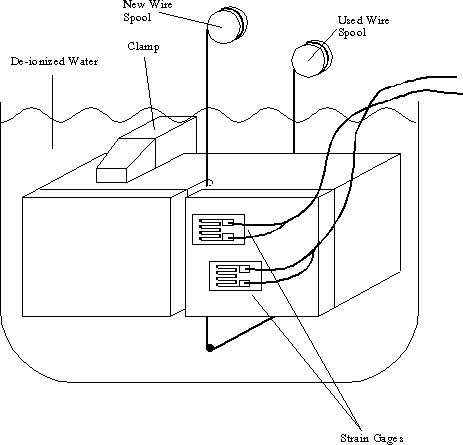| The Slitting Method for Residual Stress Measurement: : EDM Cutting |
Wire Electric Discharge Machining for Residual Stress Measurement
In the Crack Compliance Method we measure residual stress by using wire EDM to incrementally cut a slot into a part while measuring released strains.
In Wire EDM (electric discharge machining, a.k.a. spark erosion) a wire that is electrically charged with respect to the workpiece is used to make a cut. As the wire approaches the workpiece, a spark jumps the gap and electrically erodes away the material.

Advantages of Wire EDM for Measuring Residual Stress
- It introduces very little stress if done with the correct settings
- It makes a very fine slot, a 0.002" diameter wire can generally be used and will produce a slot about 0.0035" wide. Wires as small as 0.001" diameter have been used by researchers measuring residual stress (References #24)
- Because the part is bathed in deionized water, the temperature is very stable resulting in very stable strain readings
- The wire EDM machine used in our ring test was an anti-electrolysis machine which produces even less stress than a regular EDM machine.
Aren't EDM machines expensive?
It doesn't really matter. They are available everywhere. If you're at a big company or university, you probably have at least one. If not, most urban areas will have machine shops with EDM machines that will work with you for an hourly rate.Other cutting methods for crack compliance measurements
Other methods have been used for making the cut- Conventional EDM, also known as plunge EDM or ram EDM
- Milling cutter
- Saw blade
W. Cheng, I. Finnie, M. Gremaud, and M.B. Prime, "Measurement of Near Surface Residual Stresses Using Electrical Discharge Wire Machining," J. Eng. Mat. & Tech., 116, 1-7, 1994. Sorry, I don't have an electronic version.